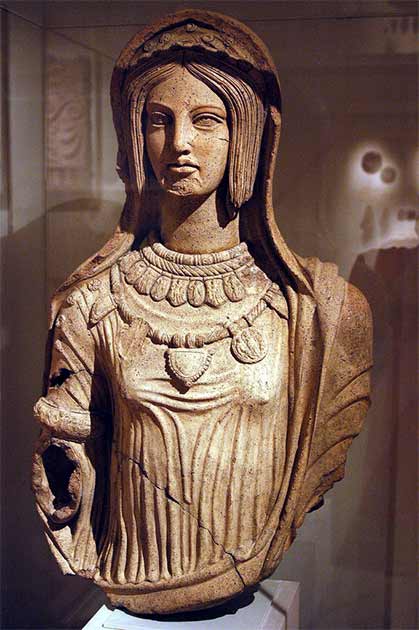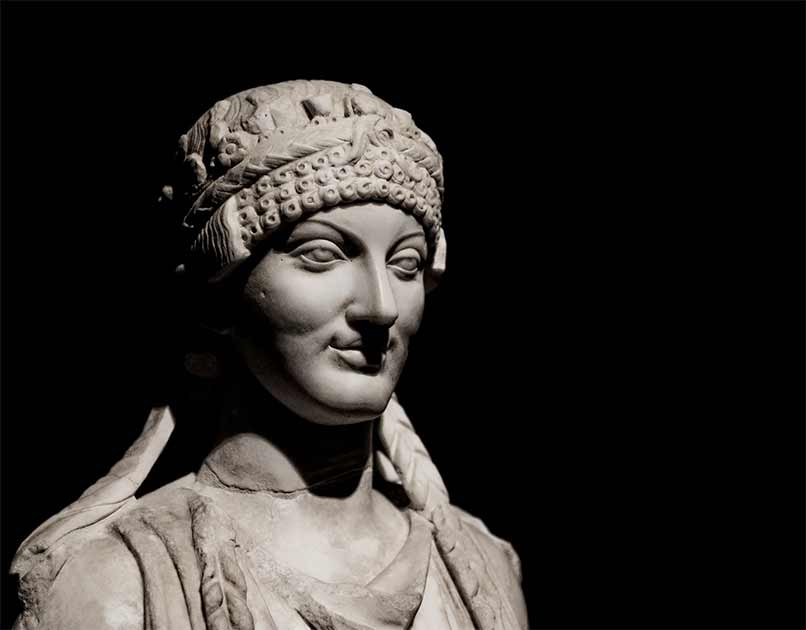Mysterious Origins of the Etruscans: DNA Study Solves the Riddle
A new study published in the journal Science Advances offers evidence to support the theory of local origins of the Etruscans, an advanced Iron Age peoples in central Italy. For the study, scientists from the Max Planck Institute, Tubingen University and the University of Florence subjected the remains of 82 humans living in central and southern Italy between 800 BC and 1000 BC to genome sequencing.
The Etruscan Civilization
The Etruscan civilization came up in the region that is modern-day Tuscany—spreading from the Tiber River in the north to parts of the Po Valley in the south--and flourished between the eighth and third centuries BC.
Known for its rich mineral resources and its trading prowess, much of its culture was destroyed or assimilated by its Roman conquerors. However, its prosperity is testified to by its sprawling necropolises with tombs decorated with magnificent wall paintings, delicately carved sarcophagi and intricate metal work, and Roman adoption of certain aspects of their clothing, religious practices and architecture. They are particularly renowned for their progress in the field of metallurgy, reports Phys.org.
Interestingly, the Etruscan culture is thought to have had greater gender equality than, for example, its contemporaneous Greek and Roman cultures. The evidence for this comes from their wall paintings where women are depicted as attending banquets and other social gatherings as equals of men.

Ornate murals in an Etruscan tomb. Source: Paolo Gallo / Adobe Stock
Origin Theories
While the Etruscans did leave some historical records in the form of epitaphs and inscriptions, most of their texts were destroyed by the conquering Romans. The problem with understanding even whatever records survived the Romans is that their language is only partially understood by modern-day historians. The Etruscan alphabet derived from the Greek one, but they spoke a language that was most likely not Indo-European.
Therefore, much of what is known about them comes from the writings of ancient Greek and Roman historians. In fact, even the term Etruscan comes from Etruria, the name given by the Romans to the region. Given the history of bitter conflict between the Etruscans and the Romans, the Roman accounts are bound to have been biased.
One of the first theories about Etruscan origins, floated by Herodotus ‘the father of history’ himself, was of them being Greek migrants from Anatolia, sent out by the king of Lydia in western Anatolia following a major famine. There is some evidence to support these Greek-Anatolian origins in the form of their use of the Greek alphabet and some eastern influences in their art like slanted eyes and braided hair. But the Etruscans being well-travelled peoples, these influences could equally have been imbibed on their travels.
On the other hand, another ancient scholar, the first-century BC Dionysus, believed that the Etruscans had local Italic origins. This latter view has found greater favour among modern historians who point to the strong similarities between Iron Age Etruscan culture and Bronze Age Villanovian culture that preceded it in central Italy.
To complicate matters, however, genetic studies of modern Tuscans in the 2010s found that almost 17 per cent of their genetic material had a Near East ancestry. This seemed to lend weight to Herodotus’s theory about the origins of the Etruscans.
So Who is Right?
The new study shows that the Near East component of modern Tuscan genes came long after the Etruscan civilization fell to the Romans, in fact from around the first century BC. The gene pool of the ancient Etruscans remained fairly stable over 800 years but post the Roman conquest, there was a notable mixing with eastern Mediterranean genes most probably owing to slaves and soldiers relocated across the Roman Empire.
“This huge genetic shift in imperial times transforms Italians from a people firmly within the genetic cloud of Europe into a genetic bridge between the Mediterranean and the Near East,” said Cosmo Posth to Haaretz.
Scientists collected genetic information from 12 archaeological sites spanning a time period of 2000 years. Of the 82 human remains studied, over half were Etruscan and were seen to share the genetic profile of the Latins living in nearby Rome. Their genes were in fact seen to be a more or less equal mix of local Neolithic farmers and Bronze Age pastoralists from the Eurasian steppe. This is similar in fact to populations across Europe, not just in Italy.

Etruscan terracotta figure of a young woman, late 4th–early 3rd century BC (CC by 2.0 / AlkaliSoaps)
This, of course, doesn’t answer all the questions and mysteries that shroud the Etruscan civilization. Most interesting is the question of language. Given that the Eurasian pastoralists are believed to have been responsible for the spread of most of the Indo-European languages, how the Etruscans retained a non-Indo-European language remains a mystery that will require further archaeological, historical and linguistic study to resolve.
"This linguistic persistence, combined with a genetic turnover, challenges simple assumptions that genes equal languages and suggests a more complex scenario that may have involved the assimilation of early Italic speakers by the Etruscan speech community, possibly during a prolonged period of admixture over the second millennium BCE," David Caramelli, Professor at the University of Florence concludes to Science Daily.
Top image: Bust of an Etruscan woman. Source: Ana Tramont / Adobe Stock
By Sahir Pandey




















Comments
How close to the Basque language is the Etruscan one? Might be a clue there.